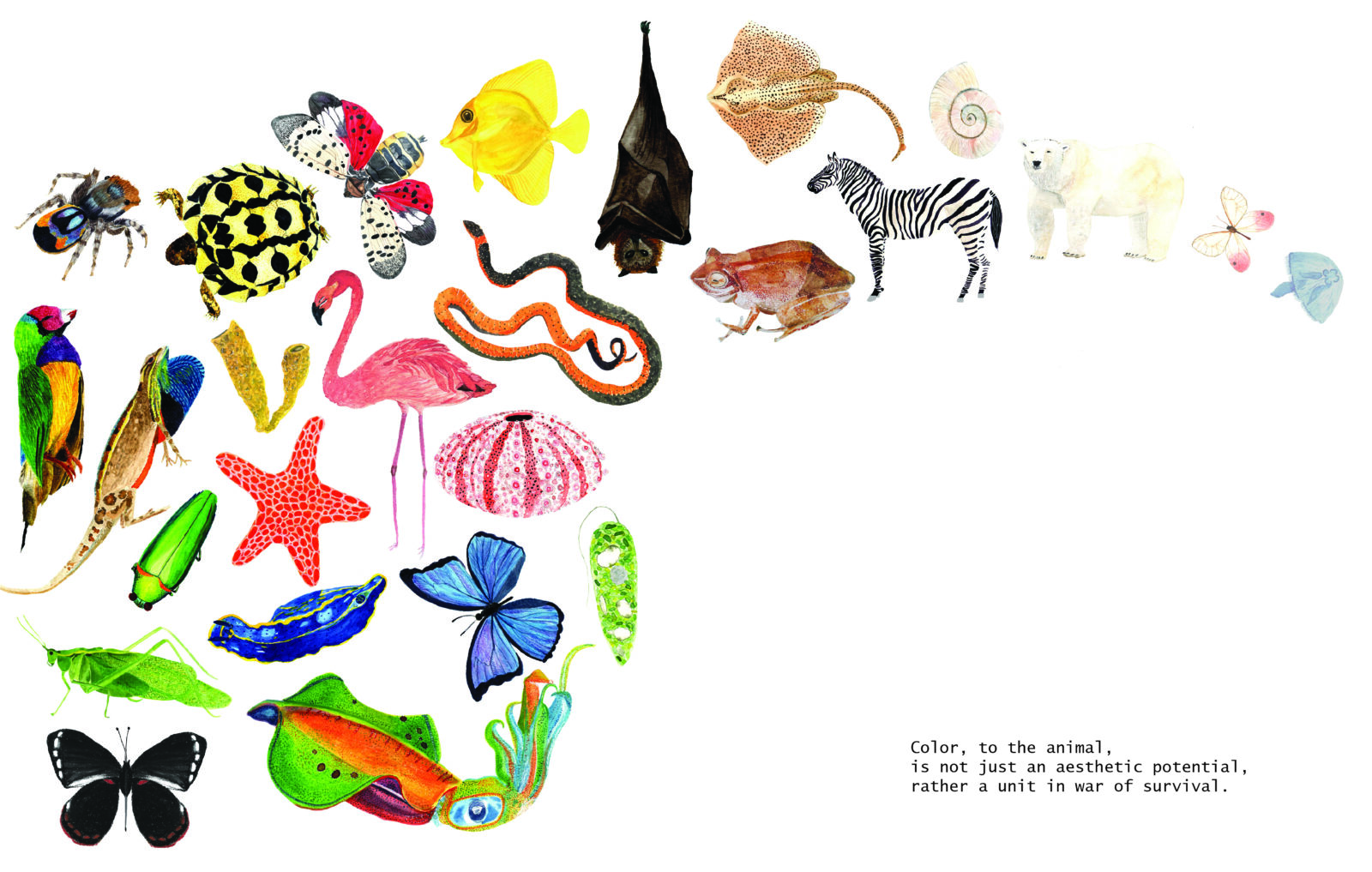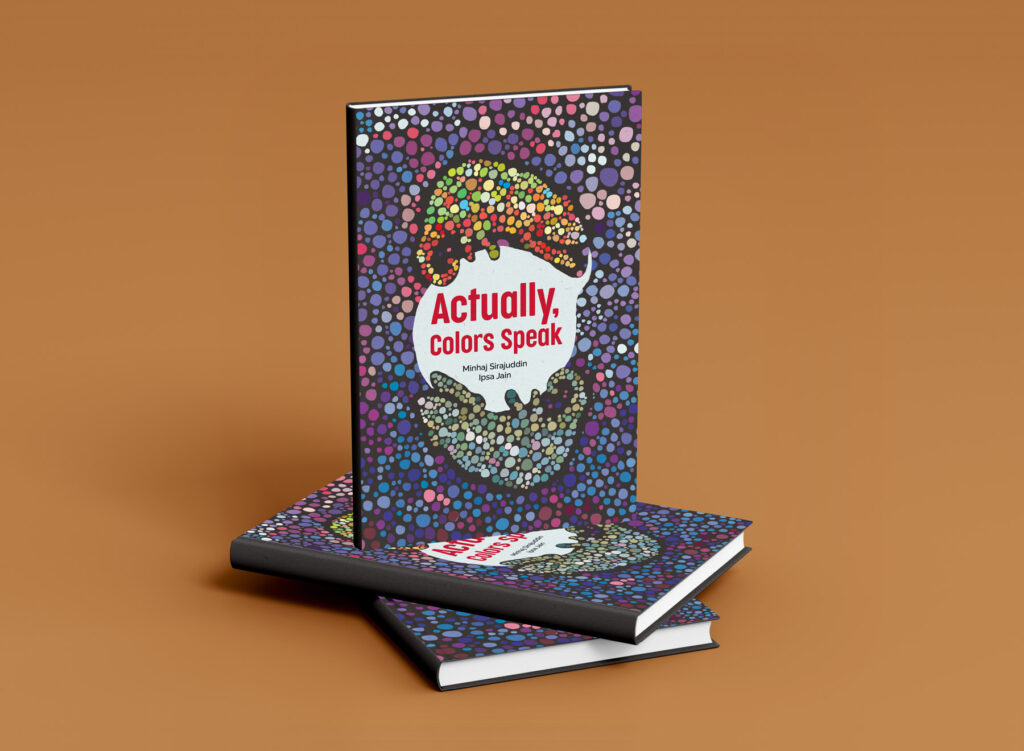
We have recently self-published a science, illustrated, popular science book on concepts from animal coloration. Find it here. Making of this has been a long learning journey for those involved. Sharing the perspective from my point of view.
MOTIVATION
As scientists working on science communication, the idea of an illustrated science book was an exciting one. Could we make a popular science book? As cell and molecular biologists, we were enthused to diversify the subjects accessible in popular science book spectrum, ecology, and astronomy.
Scientists are habituated to write for a scientifically educated audience and often rely on a lot of complex and technical concepts. We wanted to write a book that can be enjoyed and understood by a wider audience by using simpler language and illustrations.
INSPIRATION
We had books from Big Picture Press, Laura Redniss, Pratham Books, and Rohan Chakravarty for inspiration. We first had to identify a subject that is of general interest. A subject with an intrigue of its own and also a subject that has a large interest in the scientific community to have scientific data to present and represent.
PROCESS
Once we had our subject matter in mind, what followed was an intensive period of reading and learning about color change and behavior. This gave us much-needed clarity about the knowledge that we wanted to communicate.
During our research, we uncovered a lot of examples of color changes in animals, both slow-paced and fast-paced. Biased by our interests, we certainly wanted to talk about molecular processes and dug those up.
As the themes of our work began to get clearer, our next plan of action was to figure out what the voice of the story was going to be. How exactly were we going to present our content and what was going to be the source it was coming from?
We started off with rough sketches and storyboards on newspaper print rolls, going through a lot of ideas and iterations in the process. The first version of our book ended up being a mix of poetry and watercolor drawings in two sample chapters.
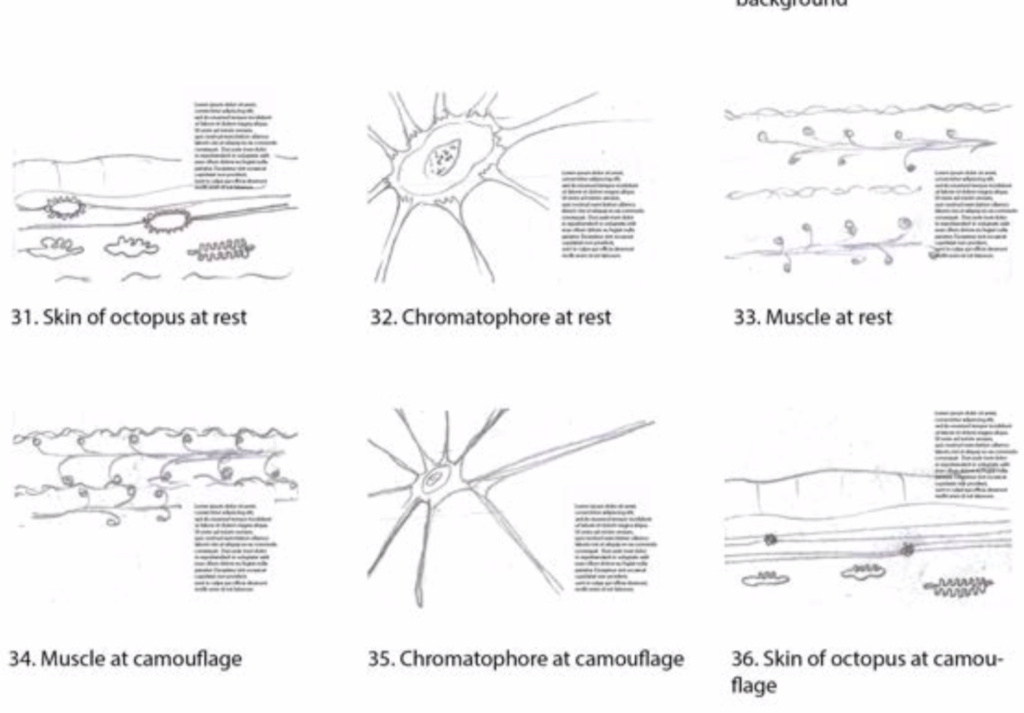
The idea of working with scales initially came up during this stage, which made it into the final book, where we go from the level outside the animal all the way inside its cells, taking the reader through the origins of natural color and color change.
Since we had just recently read about a lot of ideas and research and we had a lot of exciting ideas of our own, the amount of content that we were initially planning to include was also quite high.
There was a lot of articulate and complex research work, such as the story of the Stony Creek frog that shows animal color changing throughout the day, which was the first one we thought of including, alongside the basics of color.
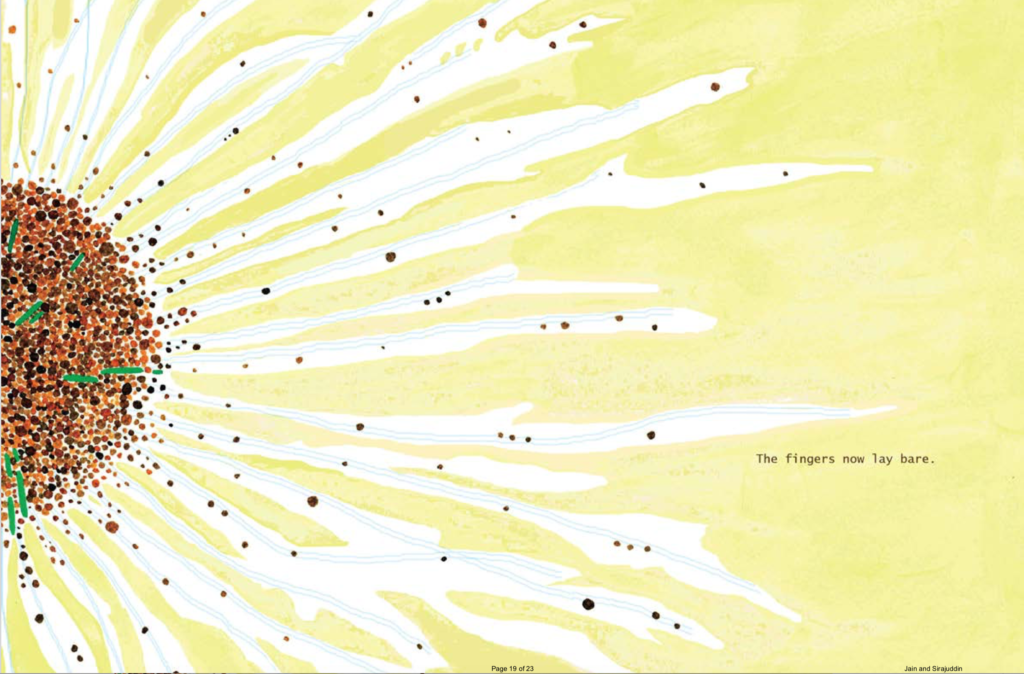
During one of our open presentations on campus, however, where we shared our work with a lot of people, we realised that our poetic writing was quite cryptic, and not quite working for science communication to a wide audience.
When we spoke to other artists scientists beyond the campus for feedback, we once again realised that what we wanted to communicate wasn’t being communicated very well, which is what led us to get back to the drawing board once again.
This is where the idea of making the story more fun and accessible came about and we decided to make it a conversation between three instruments in a color lab. The writing was made simpler and the content was reduced to a digestible amount.
Finally, we had clarity on what was to be the final product of our efforts and through storyboarding once again, we were able to pick out the three examples that have made it into the book’s stories now.
The way we have presented concepts and information lets readers focus and learn about the phenomena themselves without having to unnecessarily worry about the different subjects such as biology, chemistry, or physics.
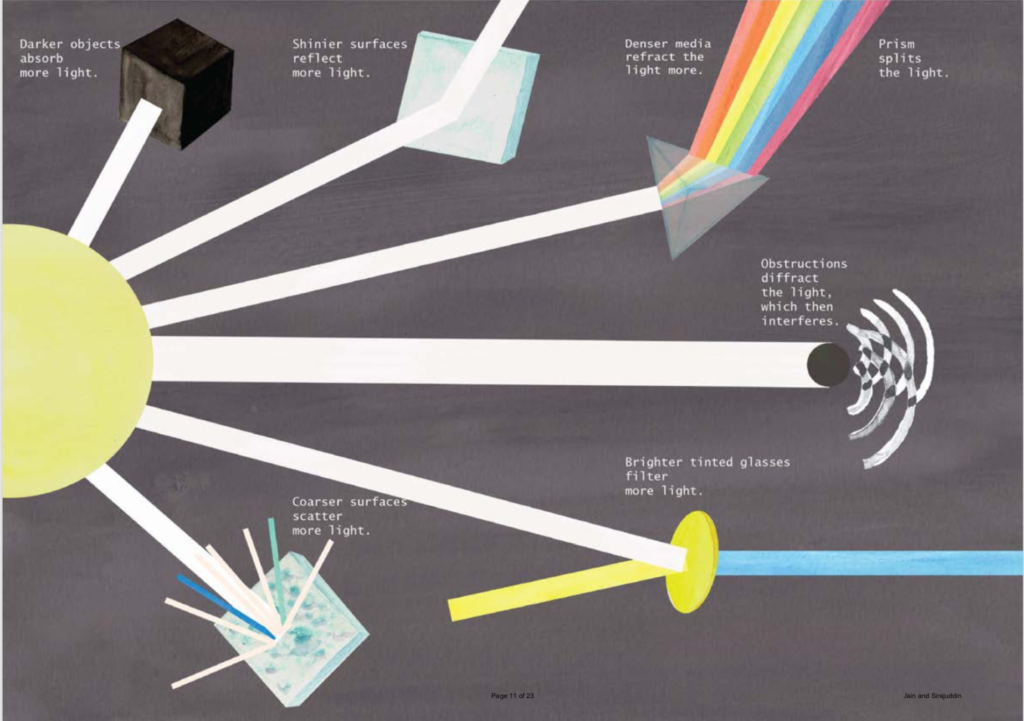
We picked three examples of animal color change to elaborate. What was really cool and interesting was that although the common thread was the color change, the processes going on behind the phenomena and the behavior associated with the phenomena in each organism were fairly different.
Once we had our stories in hand and the groundwork for research covered, we were ready to execute our idea of going from the outermost view of the animal right to the inside of the cell. A lot of time was spent looking for references for each level of this scale.
Our process was also somewhat unique in that our illustrations came before the text. This was probably because we had a lot of clarity about what we wanted to say and express and how we wanted to structure it through a graphic narrative.
A key step in the process was taking microscopy images of specimens like chameleon or octopus skin sections and translating them into sketches appropriate for page spreads. This initially involved a lot of playing around with scale and thinking in terms of cross-sectioning of tissue.
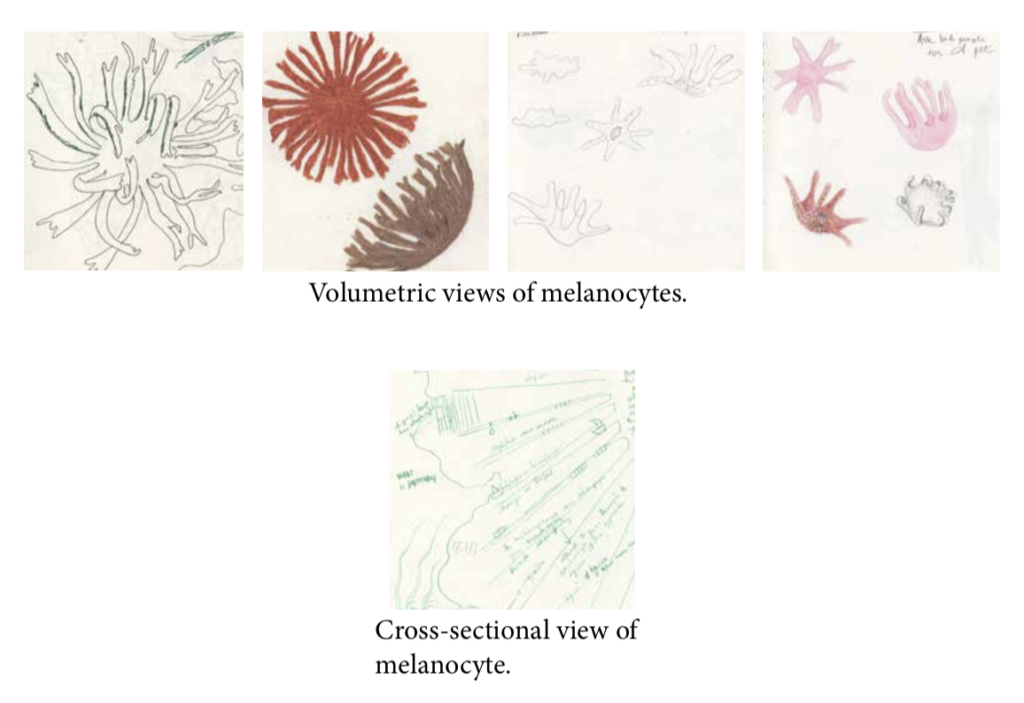
A final factor that affected the illustration work was figuring out how much creative freedom to take. Keeping in mind the size of the page, how much of the visuals would should reality and how much of it would I have to bend to effectively communicate the science of a process?
Studying and drawing individual cells was also an interesting and challenging task. Particularly in the cells of the chameleon, the changes were subtle but the effect that they had was quite significant. It was a fair bit of struggle to represent and pronounce the subtle changes in the cells themselves to reflect the overall change in the color of the skin.
A lot of fun trial-and-error ensued, with the primary focus remaining the expression of color, rather than technical details such as the number of cells or the cell layers. This would ensure that readers could relate the content back to the central theme at any given time.
It was an interesting challenge where we had the core idea in mind and then had to think about translating it to dialogue between the three characters in the book, while also building suspense, surprise, and excitement wherever needed. We also had to ensure that we are not merely describing the images, but talking about the processes in a way that images and words complement each other.
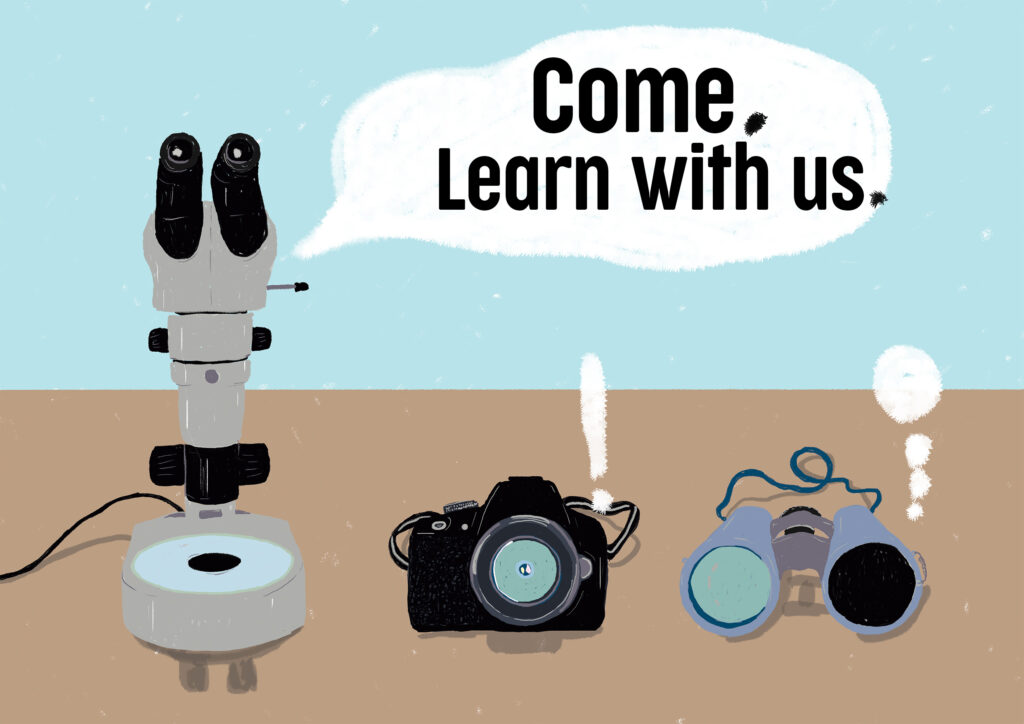
A lot of great feedback came from people across the campus and lab, with ideas shared in lab meetings and chai-breaks alike being incorporated into the drawings and visuals. To everyone who worked with us and helped us out, cheers!
Something that really helped us through the process was the assistance of our amazing editor, Somdatta, whose input on writing, especially on streamlining the connections across stories was brilliant. We also had great help from a designer extraordinaire, Rabin Jacob who helped us with design and layout.
Now that the book is out in the world, we hope that it reaches the intended audience and gets the love that was invested in making the book.
Buy it here.
